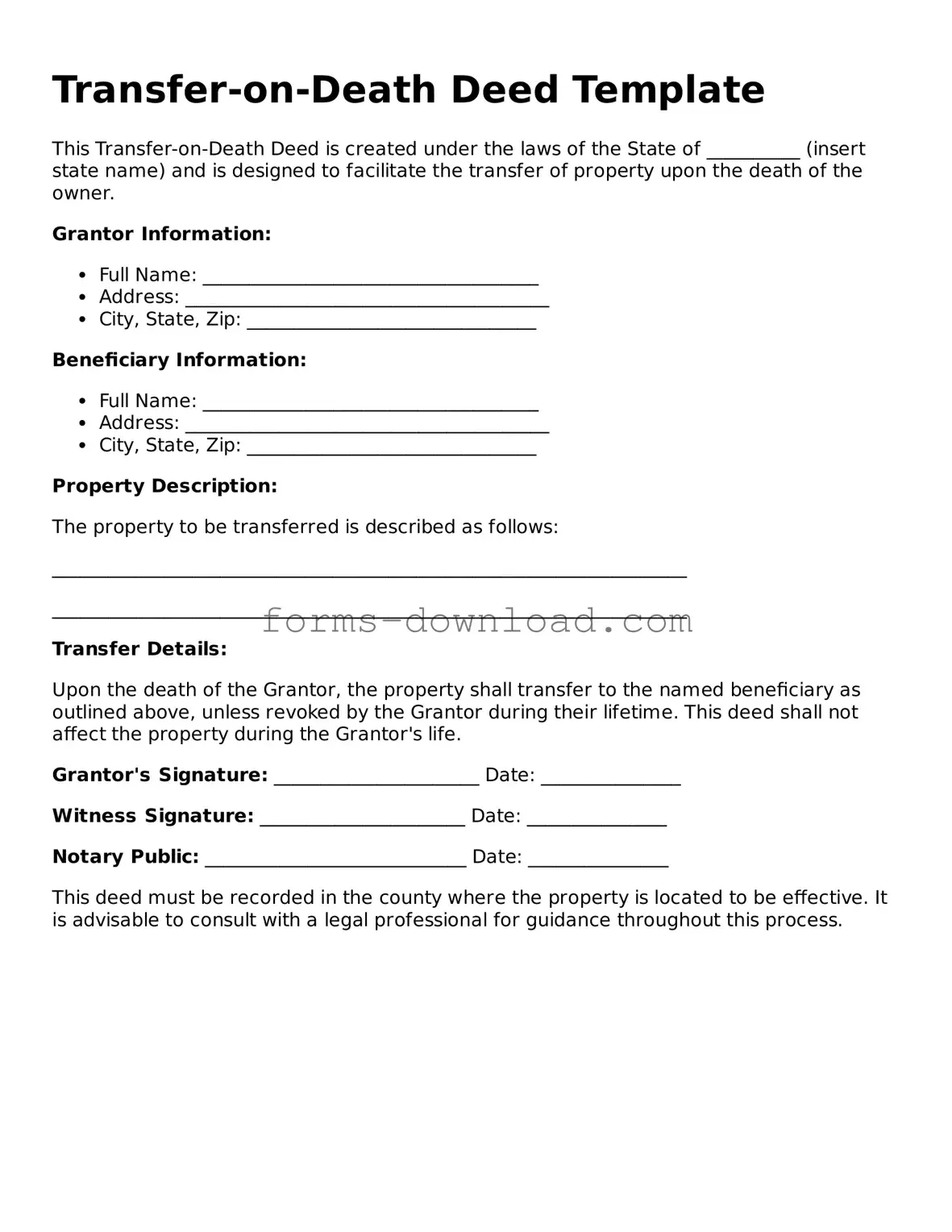Transfer-on-Death Deed Template
This Transfer-on-Death Deed is created under the laws of the State of __________ (insert state name) and is designed to facilitate the transfer of property upon the death of the owner.
Grantor Information:
- Full Name: ____________________________________
- Address: _______________________________________
- City, State, Zip: _______________________________
Beneficiary Information:
- Full Name: ____________________________________
- Address: _______________________________________
- City, State, Zip: _______________________________
Property Description:
The property to be transferred is described as follows:
____________________________________________________________________
____________________________________________________________________
Transfer Details:
Upon the death of the Grantor, the property shall transfer to the named beneficiary as outlined above, unless revoked by the Grantor during their lifetime. This deed shall not affect the property during the Grantor's life.
Grantor's Signature: ______________________ Date: _______________
Witness Signature: ______________________ Date: _______________
Notary Public: ____________________________ Date: _______________
This deed must be recorded in the county where the property is located to be effective. It is advisable to consult with a legal professional for guidance throughout this process.
